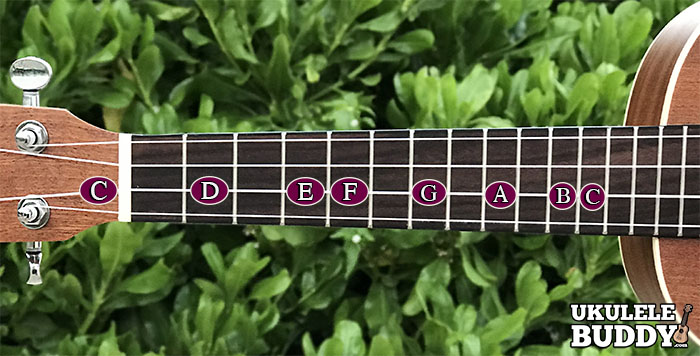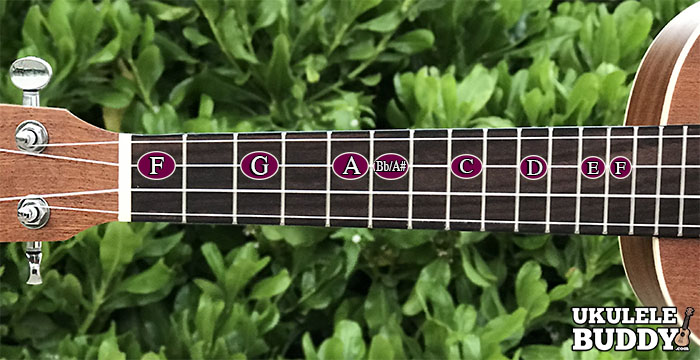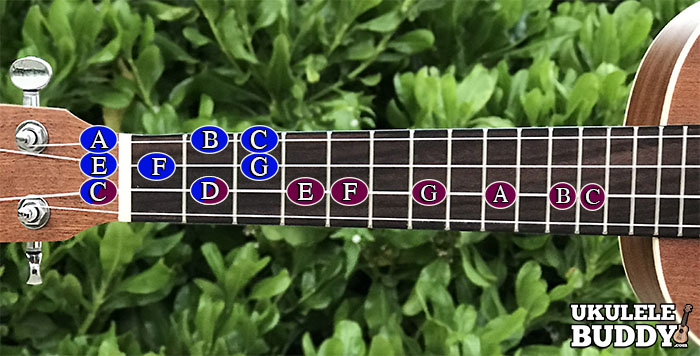Ukulele Scales for Beginners
We’re going to be introducing you to scales on this page, addressing what a scale is and why a scale is important. By learning these basics, you’ll get to grips with scales faster, so you’ll be able to start playing them on your ukulele. To get the low down on scales, keep reading…
What is a ukulele scale?
A scale is a sequence of notes that are organized by ascending or descending pitch. For example, a major scale consists of seven different pitches that span an octave using whole steps and half steps.
Wondering what “whole" and “half" steps means? Let’s explain. The distance between two pitches is known as an interval. Moving one fret on a ukulele is a half step. Therefore, to take one whole step, you must move the distance of two frets. All scales are a combination of half steps and whole steps.
Now let’s put this into practice. First, we will practice a half step. Place your first finger on the 2nd fret of the A string, and pluck that string. Then move your finger up the neck one to the 3rd fret, and then pluck that string. You just moved half a step from a B to a C note. Now let’s practice a whole step. Place your first finger on the 2nd fret of the A string again, and pluck that string. Now, instead of moving one fret, you will move two frets up the neck. Your first finger should be on the 4th fret of the A string, and play that note. You just moved a whole step from a B to a Db note. Great job!
Why do I need to learn ukulele scales?
Scales are the building blocks of music. All music is derived from scales. They help you to understand chords, arpeggios, and keys of your ukulele. Knowing scales also allows you to start creating your own music! This is where melody is derived. Not to mention that scales are great practice for building up strength in your fingers and familiarizing yourself with moving along frets.
The major scales on ukulele
Remember we mentioned the major scale earlier? Well, a major scale is a set pattern of whole steps and half steps. Below is an example of the C major scale, which, when played, sounds like "do re mi fa so la ti do," which I’m sure you’re familiar with!

The C major scale, shown in the image above, begins and ends with a C note. After playing the first note, major scales follow this pattern of steps: whole, whole, half, whole, whole, whole, half. You can put together any major scale based on this combination of movements, starting with any note. For example, if you start with an F note and follow this combination of steps, you will have an F major scale, which is shown below.

There are other kinds of scales, such as a minor scale, that consist of different patterns of whole steps and half steps, but we’ll focus on the major scale for now. Here’s a table of the notes of all the major scales, why don’t you try them out on your ukulele based on what you’ve just learned?
|
As you become more comfortable on your ukulele, you can play scales using all of the strings, rather than just moving along a single string. Below, is another way of playing a C major scale that requires much less movement of your hand. In this picture you can see the C major scale that you just learned, as well as this new one. Try playing both ways and notice that they produce the same sound! This is because you are playing the same notes, in the same order, just in different spots on the neck.

This might feel foreign for a while, but keep practicing and muscle memory will handle the rest!


